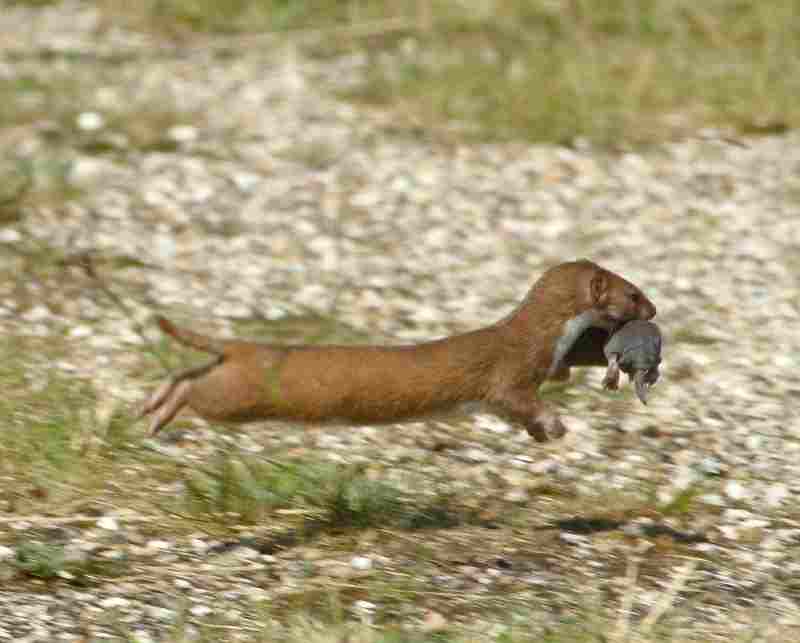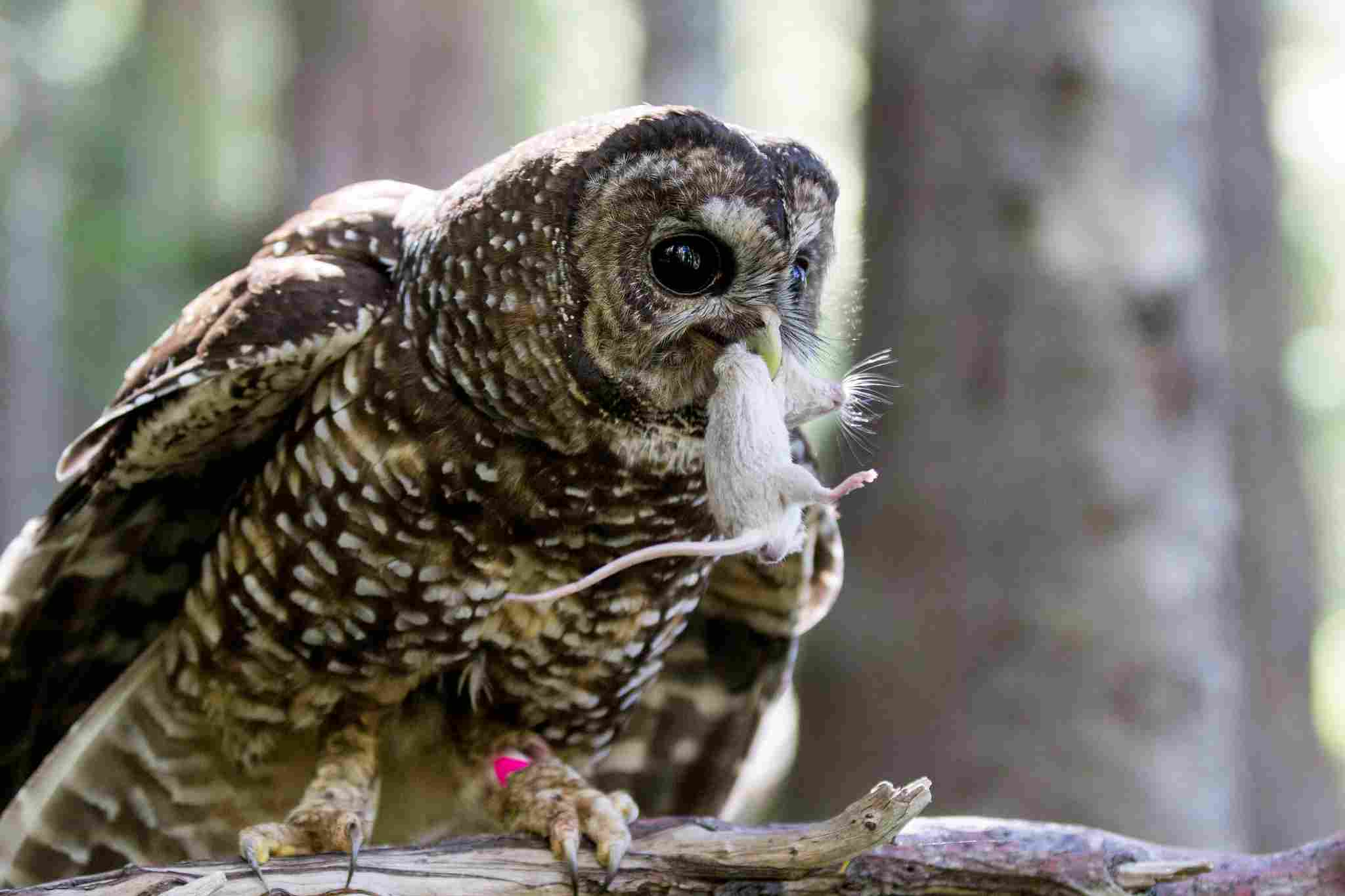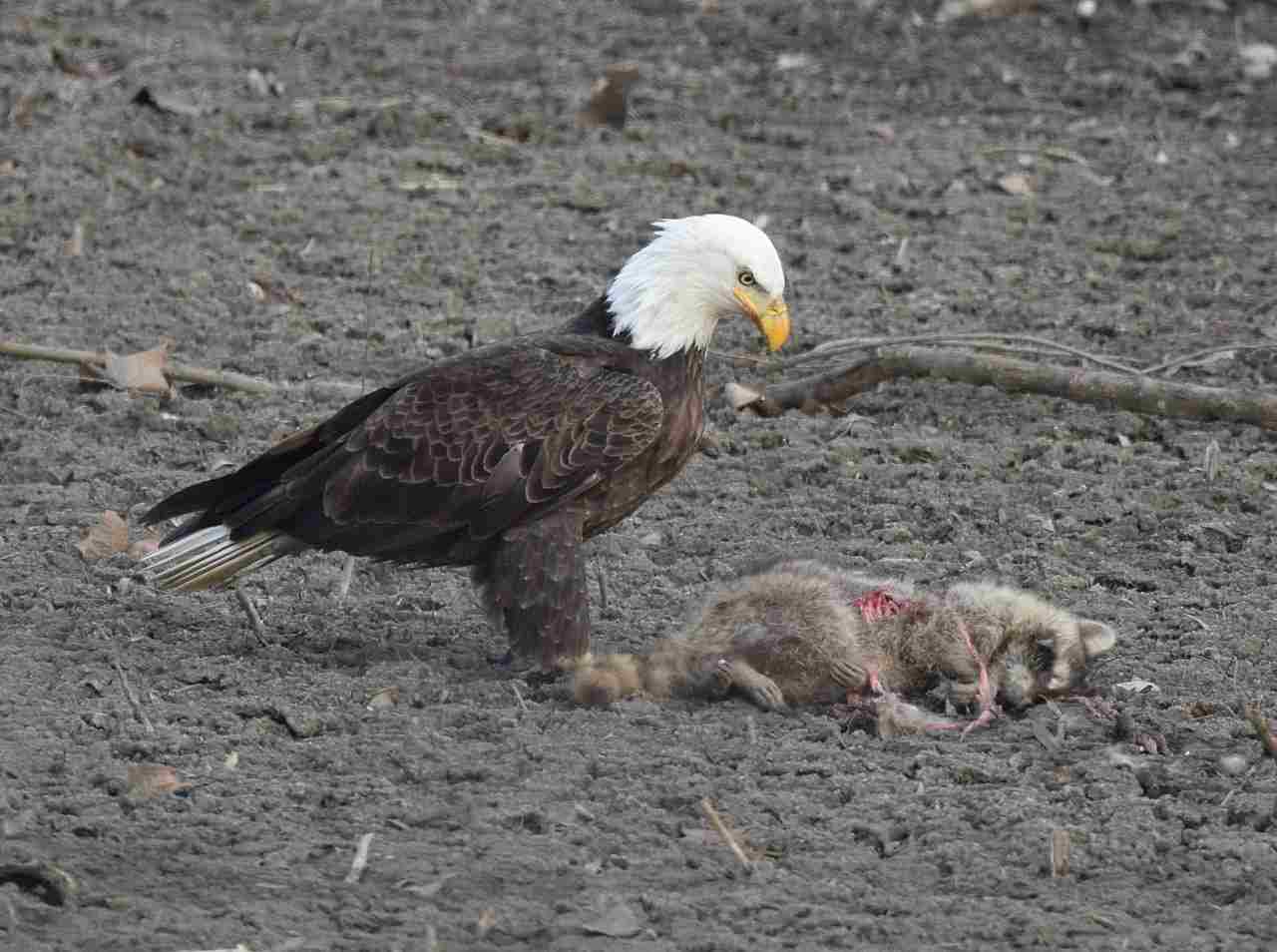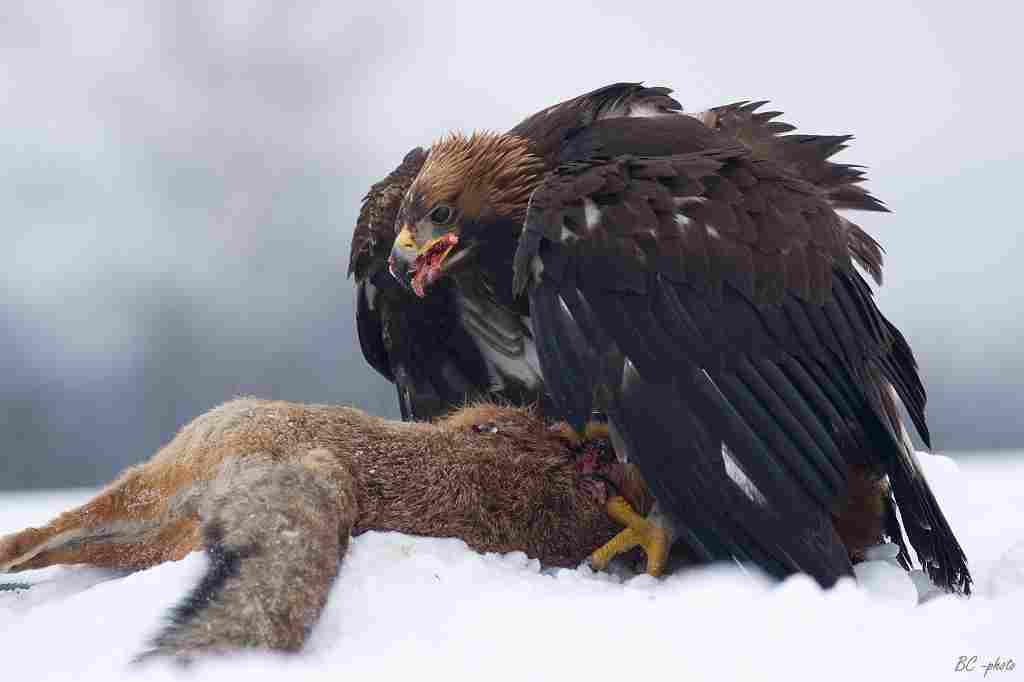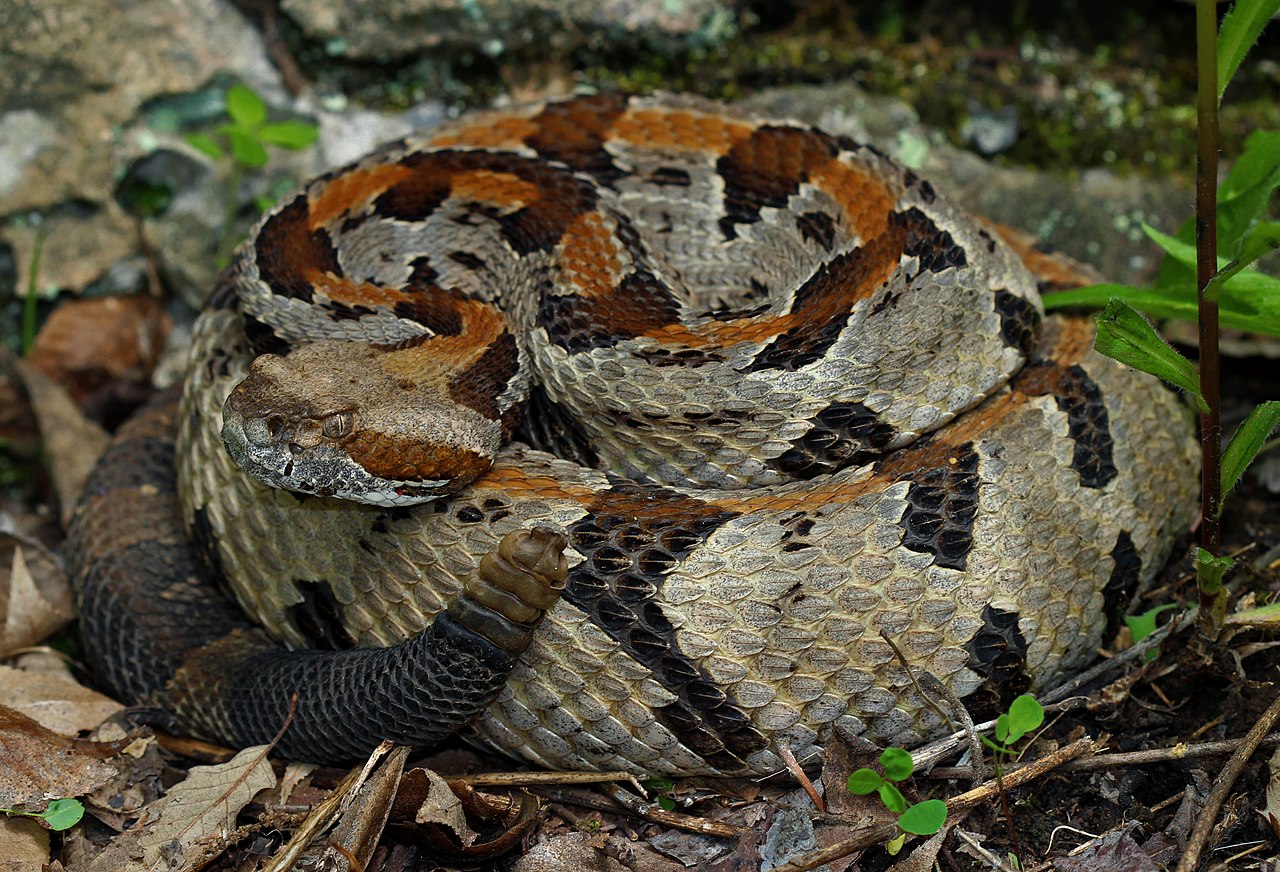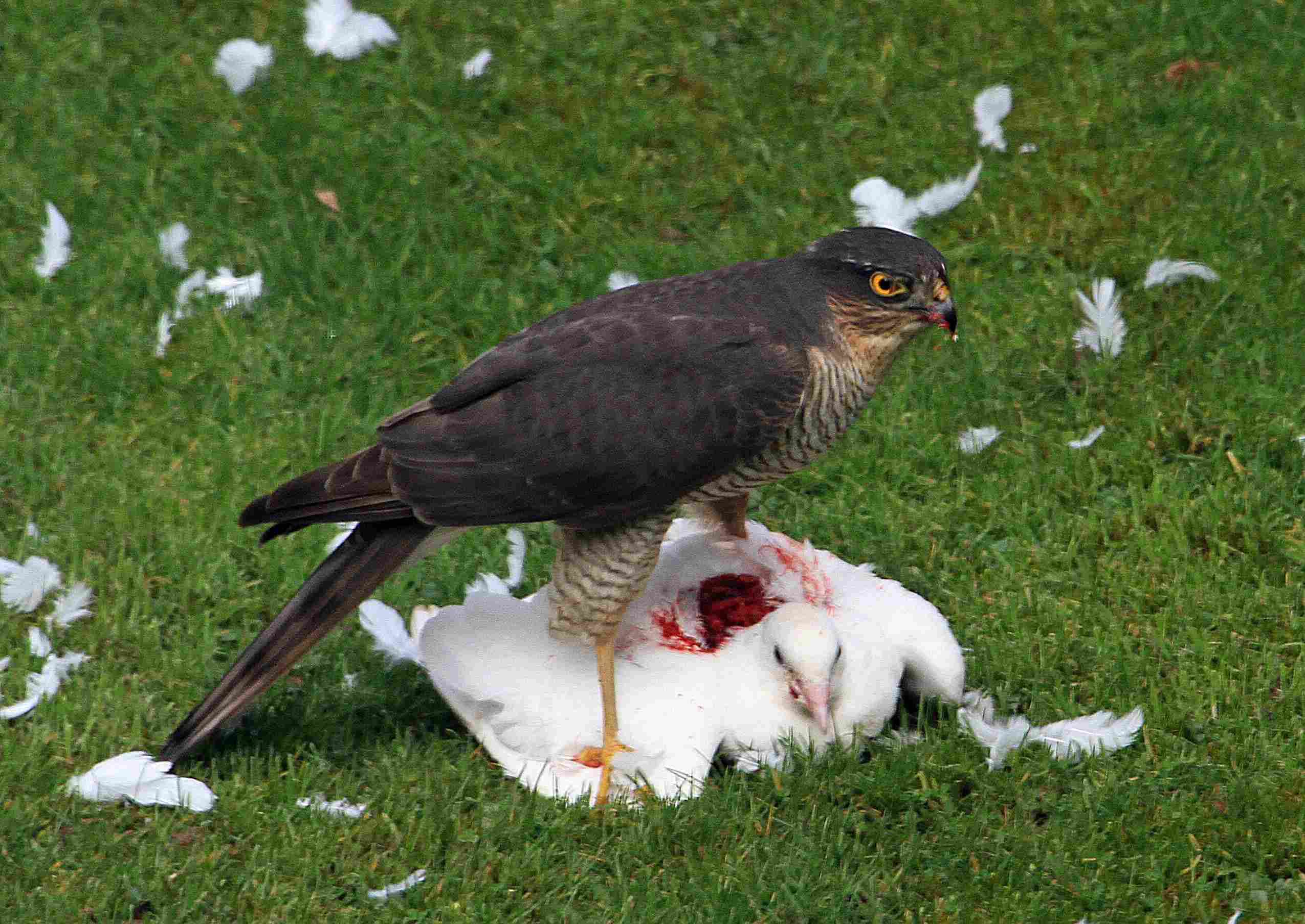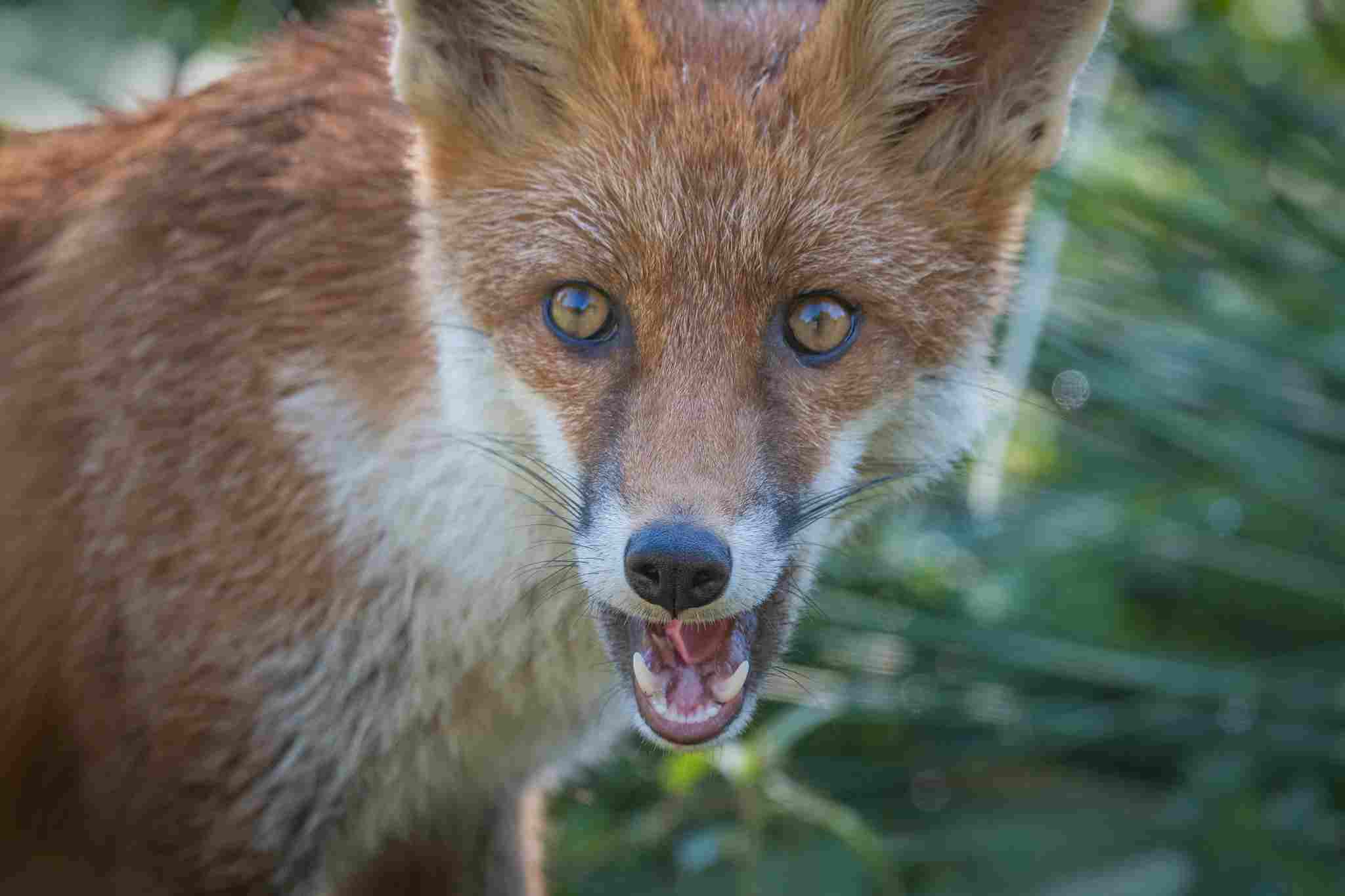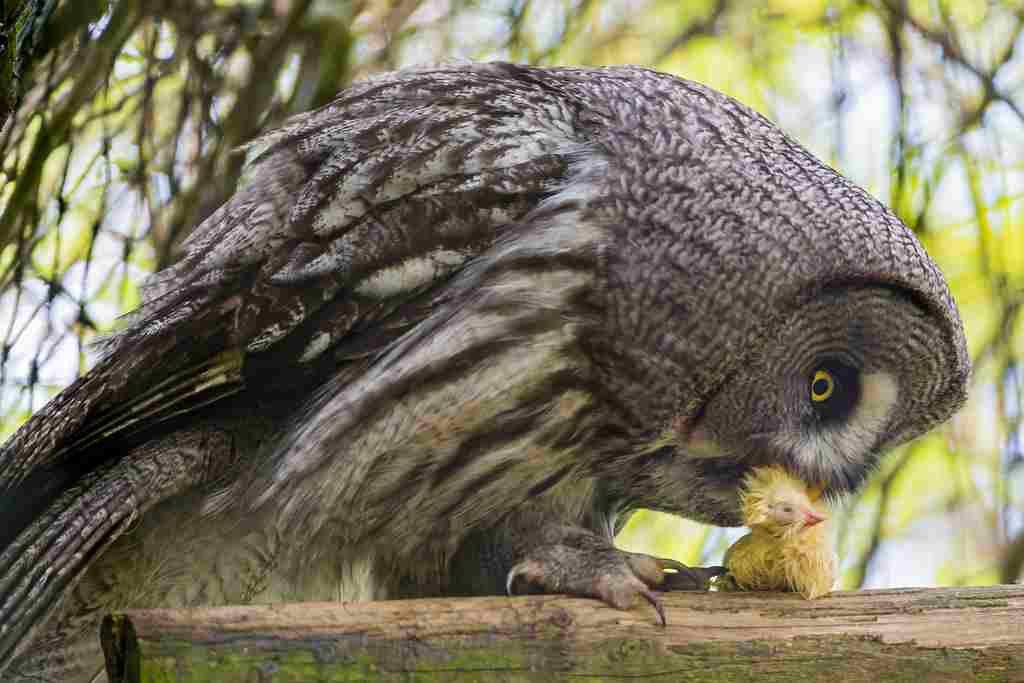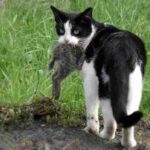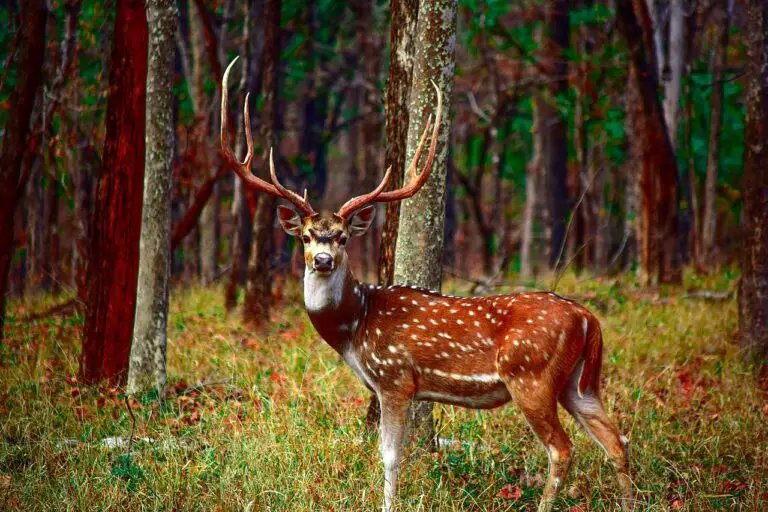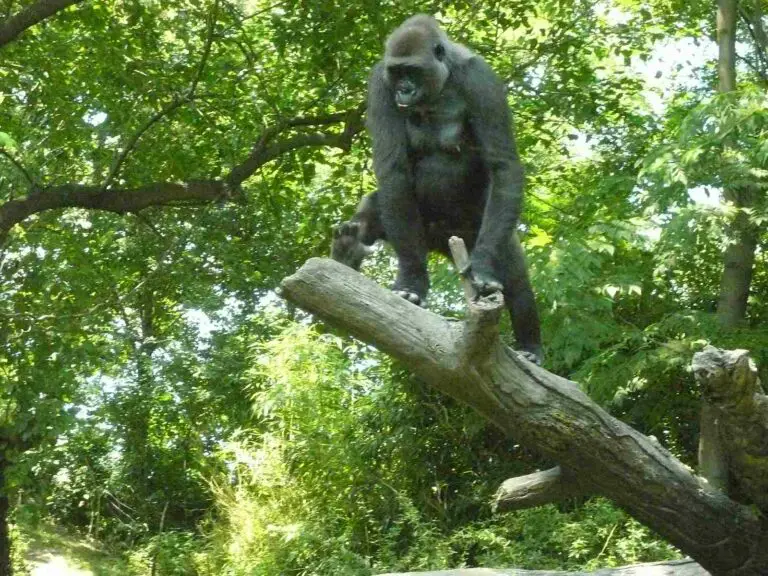11+ Predators In Ohio And Their Characteristics Discussed
Examples of predators in Ohio include the Black Bear, a large omnivorous predator that prefers forests; the Bobcat, a small feline that is expanding its range in the state; and the Black Widow, a venomous spider recognized by its red hourglass marking. Other predators are the Copperhead, a venomous snake with a copper-colored head; the Coyote, a highly adaptable canine found throughout Ohio; and the Timber Rattlesnake, a venomous snake typically found in heavily wooded areas. Raptors such as Hawks, Eagles, and Owls are also common, each with unique hunting skills and preferences for different habitats.
1. Black Bear
The Black Bear (Ursus americanus) is a native predator in Ohio, known for its large size and omnivorous diet. Although these bears primarily consume plants, fruits, and insects, they are opportunistic feeders and will eat small mammals and carrion if available. Black Bears are solitary animals and tend to avoid humans, but they can pose a threat when they feel threatened or when searching for food in human-populated areas. They are most commonly found in the forests of southern and eastern Ohio, where they can roam freely across large tracts of land.
In recent years, sightings of Black Bears in Ohio have increased as their populations rebound from historical declines. This resurgence can be attributed to better wildlife management and conservation efforts. Black Bears are skilled climbers and swimmers, and they often travel significant distances in search of food. While generally non-aggressive, encounters with humans can occur, especially in rural or suburban areas where natural habitats intersect with human settlements. Proper safety measures, such as securing trash and avoiding direct contact, are crucial in minimizing negative interactions with these majestic animals.
2. Bobcat
The Bobcat (Lynx rufus) is a small but formidable feline predator native to Ohio. Distinguished by its tufted ears, short tail, and spotted fur, the Bobcat is a skilled hunter, often preying on rabbits, birds, and small rodents. This elusive carnivore is primarily nocturnal, with a wide range of habitats including forests, swamps, and even semi-urban areas. Bobcats are solitary by nature, coming together only during mating season, and they are known for their agility and stealth when stalking prey.
Despite being shy and avoiding human interaction, Bobcats are expanding their range in Ohio as their population recovers. This resurgence is partly due to effective wildlife conservation and legal protection. While they pose minimal risk to humans, Bobcats can sometimes prey on small domestic animals, leading to conflicts in areas where suburban development encroaches on their habitats. To minimize these interactions, it’s recommended to secure pet enclosures and avoid leaving food outside that could attract wildlife.
3. Black Widow
The Black Widow (Latrodectus mactans) is a venomous spider known for its distinctive black body and red hourglass marking on the underside of its abdomen. Found in southern Ohio, these spiders prefer dark, sheltered areas such as woodpiles, sheds, and basements. Although small in size, Black Widows have a potent neurotoxic venom, which can cause severe pain and other symptoms if bitten. Despite their fearsome reputation, Black Widow bites are rare, and fatalities are extremely uncommon due to the availability of medical treatment and antivenom.
Black Widows are generally non-aggressive, and bites typically occur when the spider feels threatened or is accidentally disturbed. These spiders play an essential role in controlling insect populations, contributing to the ecosystem’s balance. To reduce the risk of encountering Black Widows, it’s advisable to wear gloves when handling wood or debris, and to regularly clean and inspect areas where they might reside. If bitten, prompt medical attention is crucial to manage symptoms and ensure a swift recovery.
4. Brown Recluse
The Brown Recluse (Loxosceles reclusa) is another venomous spider found in Ohio, recognized by its violin-shaped marking on its back. These spiders are usually light to dark brown and favor hidden, undisturbed spaces like closets, attics, and crawl spaces. The Brown Recluse’s venom contains enzymes that can cause necrosis, leading to localized tissue damage and, in severe cases, systemic symptoms. Bites are rare but can be serious, requiring medical intervention for proper treatment.
While Brown Recluse spiders are shy and not aggressive, they may bite if trapped against the skin, such as in clothing or bedding. It’s recommended to keep areas clean and clutter-free to minimize their preferred hiding spots. Wearing protective clothing when working in storage spaces or moving boxes can reduce the risk of bites. If bitten, early medical attention is critical, as untreated bites can lead to more significant health complications.
5. Copperhead
The Copperhead (Agkistrodon contortrix) is a venomous snake found in Ohio’s southern regions, particularly in rocky and wooded areas. Named for its copper-colored head, this snake has a distinctive hourglass pattern along its body, helping it blend into its environment. Copperheads are ambush predators, lying in wait for their prey, which primarily includes small rodents, amphibians, and insects. Although venomous, Copperheads are generally non-aggressive and will strike only when threatened or provoked.
Encounters with Copperheads in Ohio are rare, but they can occur when people venture into their natural habitats. To avoid these snakes, hikers and outdoor enthusiasts are advised to stay on trails, wear sturdy footwear, and avoid reaching into areas where visibility is limited. If bitten, medical treatment should be sought immediately, as the venom can cause pain, swelling, and other serious symptoms. Copperhead bites are rarely fatal, but quick response and proper care are essential for recovery.
6. Coyote
The Coyote (Canis latrans) is a highly adaptable predator found throughout Ohio, known for its intelligence and versatility. Coyotes are opportunistic feeders, preying on small mammals, birds, and even fruits or vegetables when necessary. They often live in family groups, with complex social structures and distinct territories. In Ohio, Coyotes are increasingly seen in suburban and even urban areas, as they adapt to human environments in search of food and shelter.
While Coyotes generally avoid humans, their presence in residential areas can lead to conflicts, particularly when it comes to pets and livestock. To reduce these conflicts, residents are encouraged to secure trash, keep pets on leashes, and avoid feeding wildlife. Despite their sometimes fearsome reputation, Coyotes play a valuable role in controlling rodent populations and maintaining ecosystem balance. Responsible coexistence practices can help minimize negative interactions and promote a harmonious relationship between Coyotes and humans.
7. Timber Rattlesnake
The Timber Rattlesnake (Crotalus horridus) is one of Ohio’s most venomous snakes, found in the state’s southern regions and heavily wooded areas. Known for its rattle and distinctive dark crossbands on a lighter background, this snake can grow quite large and is capable of delivering a potent venomous bite. Timber Rattlesnakes are generally shy and prefer to avoid human contact, but they will defend themselves if threatened or accidentally stepped on.
Despite their fearsome appearance, Timber Rattlesnakes are critical to the ecosystem, controlling populations of small mammals like rodents. Encounters with humans are rare, but they do happen, particularly during hiking or camping activities. To avoid these snakes, it’s best to stay on established trails, use a walking stick to probe ahead, and wear high boots when venturing into wooded areas. If bitten, immediate medical attention is crucial, as the venom can cause severe symptoms. While fatalities are rare, prompt treatment can significantly improve outcomes.
8. Eastern Massasauga
The Eastern Massasauga (Sistrurus catenatus) is a small rattlesnake native to Ohio, typically found in wetlands and marshy areas. Recognized by its stout body and patterned scales, the Eastern Massasauga is a timid snake that prefers to avoid human interaction. Unlike other rattlesnakes, it has a quieter rattle and tends to be more reclusive. Despite being venomous, it rarely bites unless it feels threatened or cornered. Its diet primarily consists of small rodents, amphibians, and other small prey.
Conservation efforts are underway to protect the Eastern Massasauga, as it is listed as a threatened species in Ohio. Its habitat has been significantly reduced due to urban development and agriculture, leading to a decline in population. To minimize potential encounters, it’s best to be cautious when walking through wetlands or marshy areas, and to wear appropriate footwear and clothing. If bitten, seek immediate medical attention, as the venom can cause pain and swelling, though fatalities are extremely rare.
9. Fox
Foxes are common predators in Ohio, with the Red Fox (Vulpes vulpes) and Gray Fox (Urocyon cinereoargenteus) being the most prevalent species. Known for their bushy tails and keen intelligence, foxes are versatile hunters that feed on small mammals, birds, and insects, and they also scavenge for food when necessary. Foxes are highly adaptable and can thrive in various habitats, from forests and farmlands to suburban areas. Their agility and cunning nature make them effective predators, yet they generally avoid human contact.
Foxes are often admired for their beauty and playfulness, but they can also cause issues in residential areas, particularly when they prey on small pets or raid gardens. To avoid attracting foxes, residents are encouraged to secure trash and not leave pet food outside. Despite occasional conflicts, foxes play an essential role in controlling rodent populations and maintaining ecological balance. By taking simple precautions, humans and foxes can coexist peacefully.
10. Least Weasel
The Least Weasel (Mustela nivalis) is the smallest carnivorous mammal in Ohio, known for its slender body and high energy levels. Despite its diminutive size, the Least Weasel is a ferocious predator, preying on small rodents, birds, and insects. It is highly adaptable and can be found in various habitats, from forests to grasslands, and even in suburban settings. Least Weasels are solitary and very agile, often using their speed and agility to hunt and avoid larger predators.
Although Least Weasels are not generally a threat to humans, they can become a nuisance if they invade homes or structures in search of food. They are adept at squeezing into small spaces, which can lead to problems in residential areas. However, they play a vital role in controlling rodent populations, contributing to ecological balance. To minimize potential conflicts, it’s advisable to secure entry points to buildings and avoid leaving out food sources that might attract these tiny but fierce predators.
11. Hawk
Hawks are among the most visible birds of prey in Ohio, with species like the Red-tailed Hawk (Buteo jamaicensis) and the Cooper’s Hawk (Accipiter cooperii) being among the most common. These raptors are known for their keen eyesight, sharp talons, and strong beaks, allowing them to hunt a variety of prey, from small mammals to birds and reptiles. Hawks are adaptable and can be found in various habitats, including forests, fields, and even urban areas. Their presence is a sign of a healthy ecosystem, as they play a key role in controlling prey populations.
Hawks are generally non-aggressive towards humans, but they can pose a threat to small pets if they hunt in residential areas. To avoid conflicts, pet owners should supervise their pets when outdoors and remove attractants that might draw hawks closer to homes. Hawks are protected by law, making it illegal to harm or harass them. These majestic birds are often admired for their beauty and grace, and with proper precautions, they can coexist with humans without issue.
12. Eagle
Eagles are among the most iconic birds of prey in Ohio, with the Bald Eagle (Haliaeetus leucocephalus) being the most notable species. Known for its impressive size and distinctive white head and tail feathers, the Bald Eagle is a symbol of strength and freedom. These raptors are primarily fish-eaters but will also hunt small mammals and scavenge for carrion. Bald Eagles typically nest near large bodies of water, where they have access to ample food sources. In Ohio, Bald Eagles have made a remarkable comeback thanks to conservation efforts, and their presence is a testament to the success of these programs.
Eagles are generally not aggressive towards humans, but they can be protective of their nesting areas, especially during the breeding season. It’s crucial to maintain a safe distance from eagle nests to avoid disturbing them. Observing eagles in the wild can be a breathtaking experience, and there are designated viewing areas in Ohio where people can watch these magnificent birds without causing harm. By respecting their habitats and following guidelines, humans can coexist with eagles and appreciate their beauty in the wild.
13. Owl
Owls are nocturnal birds of prey commonly found in Ohio, with species like the Great Horned Owl (Bubo virginianus) and the Eastern Screech Owl (Megascops asio) being the most recognized. These birds are known for their distinctive hoots, excellent night vision, and silent flight, which allows them to hunt undetected. Owls primarily feed on small mammals, birds, and insects, using their sharp talons and beaks to capture prey. Their presence is often an indicator of a healthy ecosystem, as they play a significant role in controlling rodent populations.
Owls are generally reclusive and avoid human contact, but they can sometimes be seen in residential areas, especially where there is ample tree cover. Encounters with owls are usually harmless, but it’s advisable to avoid disturbing them, particularly during nesting season. If you hear an owl’s distinctive hoot at night, it’s best to appreciate it from a distance. Owls are protected by law, and harming or harassing them is illegal. By respecting their habitats and observing from afar, humans can coexist with these intriguing nocturnal predators.
*Summary
-
Black Bear: Large omnivorous predator in Ohio; prefers forests; solitary; generally avoids humans; increasing in population due to conservation efforts.
-
Bobcat: Small feline predator; nocturnal; feeds on small mammals and birds; found in various habitats; expanding range in Ohio.
-
Black Widow: Venomous spider; recognized by red hourglass marking; typically found in dark, sheltered areas; bites are rare but potentially harmful.
-
Brown Recluse: Venomous spider; known for violin-shaped marking; prefers hidden, undisturbed spaces; bites can cause tissue damage; requires medical attention.
-
Copperhead: Venomous snake; found in southern Ohio; named for its copper-colored head; generally non-aggressive; bites can cause severe symptoms.
-
Coyote: Adaptable predator found throughout Ohio; feeds on small mammals and occasionally fruits; lives in family groups; often seen in suburban areas.
-
Timber Rattlesnake: Venomous snake; known for its rattle and distinct crossbands; typically found in heavily wooded areas; generally shy.
-
Eastern Massasauga: Small venomous rattlesnake; prefers wetlands and marshy areas; shy and reclusive; listed as a threatened species in Ohio.
-
Fox: Common predator in Ohio; both Red Fox and Gray Fox; adaptable to various habitats; feeds on small mammals and birds; generally avoids human contact.
-
Least Weasel: Smallest carnivorous mammal; agile and ferocious predator; primarily feeds on small rodents; can be a nuisance in residential areas.
-
Hawk: Common raptor in Ohio; known for sharp talons and strong beaks; feeds on small mammals, birds, and reptiles; adaptable to various habitats.
-
Eagle: Iconic bird of prey; Bald Eagle is the most notable; primarily fish-eater; significant comeback due to conservation efforts; generally non-aggressive.
-
Owl: Nocturnal bird of prey; silent flight and excellent night vision; primarily feeds on small mammals and insects; often found in residential areas.
| Predator | Characteristics |
| Black Bear |
Large omnivore; solitary; found in forests; increasing population.
|
| Bobcat |
Nocturnal feline predator; feeds on small mammals; expanding range in Ohio.
|
| Black Widow |
Venomous spider; red hourglass mark; found in dark, sheltered areas.
|
| Brown Recluse |
Venomous spider; violin-shaped mark; prefers hidden spaces; bites can be harmful.
|
| Copperhead |
Venomous snake; copper-colored head; generally non-aggressive.
|
| Coyote |
Adaptable predator; found throughout Ohio; occasionally seen in suburban areas.
|
| Timber Rattlesnake |
Venomous snake; known for its rattle; found in heavily wooded areas.
|
| Eastern Massasauga |
Small venomous rattlesnake; prefers wetlands; listed as threatened species.
|
| Fox |
Common predator; adaptable to various habitats; feeds on small mammals.
|
| Least Weasel |
Smallest carnivorous mammal; agile and ferocious; can be a nuisance.
|
| Hawk |
Common raptor; sharp talons and beak; feeds on small mammals and birds.
|
| Eagle |
Iconic bird of prey; Bald Eagle; primarily fish-eater; significant conservation.
|
| Owl |
Nocturnal bird of prey; silent flight; feeds on small mammals and insects.
|
